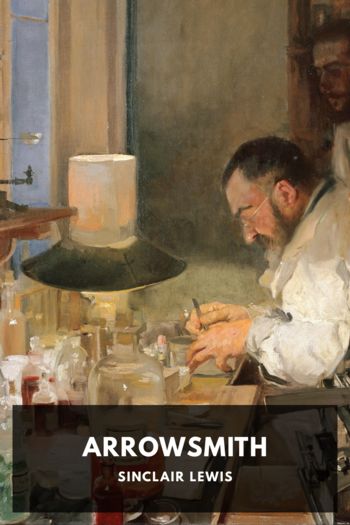Holocaust: The Nazi Persecution and Murder of the Jews, Peter Longerich [essential books to read TXT] 📗

- Author: Peter Longerich
Book online «Holocaust: The Nazi Persecution and Murder of the Jews, Peter Longerich [essential books to read TXT] 📗». Author Peter Longerich
only a few months of their coming to power. Problems as distinct as the economic
situation of the lower middle class, the seething violence of the SA and the
international isolation of the Reich were to be reduced to a single common
point of origin, stamped with the slogan ‘the Jews are our misfortune’. By
unleashing the anti-Jewish campaign the NSDAP succeeded above all in seizing
the domestic policy initiative and in maximizing their room for manoeuvre
vis-à-vis their conservative coalition partners.
The practical preparations for boycott were begun on 26 March after a conver-
sation between Hitler and Goebbels. They were entrusted to Julius Streicher,
district chief or Gauleiter of the area around Nuremberg and one of the most
radical anti-Semites in the whole Party, who was made the chair of a ‘Central
Committee to Combat Jewish Lies about Atrocities and Boycott’. 16 On 28 March the Committee issued a call to prepare the boycott. 17 Responsibility for it was clearly claimed by Hitler in the cabinet meeting held on 28 March 1933, when he
informed the cabinet that ‘he, the Reich Chancellor himself, had ensured that the
appeal would be issued to the National Socialist Party’. 18
Because acts of violence against Jews were becoming increasingly frequent in
the days before the ‘boycott’ that was to begin on 1 April for an unlimited period, 19
considerable effort was expended to ensure that the whole undertaking would run
in a smooth and disciplined manner. To this end Goebbels declared on 31 March
that the campaign would be ‘suspended on the evening of the first day (this was a
Saturday) until the following Wednesday; it would only be relaunched if the ‘lies
about atrocities’ from abroad had not ceased by that point. 20
Following a tried and tested pattern, on 1 April SA and Hitler Youth guards
carrying pre-printed placards were stationed outside Jewish shops and attempted
to prevent potential customers from entering. The atmosphere on that day was
characterized by crowds of people in the business quarters, gathered round the
entrances of the shops being forcibly boycotted. Because their customers were
Displacement from Public Life, 1933–4
37
being intimidated, most Jewish shop owners found themselves compelled to shut
as the day wore on. 21
Whilst in the main shopping streets of the cities the impression given was of a
carefully regulated Party campaign, in the side streets and in smaller towns attacks
on Jewish firms mounted steadily, often with display windows being daubed or
smashed. In many towns Jewish citizens were threatened, mistreated, or driven
through the streets by squads of SA troops. There were isolated instances of
looting. In Kiel a Jewish lawyer who was supposed to have shot and seriously
injured an SS man was lynched by the mob whilst in police custody. 22 On the evening of 1 April the boycott was ‘suspended’ for three days, as planned, and not
relaunched thereafter, since the Central Committee announced that the supposed
stories from abroad about atrocities in Germany had abated. 23
The boycott did in fact enable the regime to achieve its intentions. Even if
innumerable reports confirm that a proportion of the public deliberately shopped
that day in Jewish-owned businesses, 24 the majority of the population evidently acted just as the regime had expected them to. On that day most people avoided
going to Jewish shops. The boycott therefore largely achieved its aims.
The regime could also claim as a further aspect of its success the fact that since
the end of March, in anticipation of the imminent boycott, a whole series of voices
usually heard in opposition to the government had taken a public stance against
foreign claims of atrocities being perpetrated in Germany and had mobilized their
contacts abroad in like manner.
The National Socialists thus succeeded in presenting foreign responses pro-
voked by their own anti-Jewish campaign as ‘anti-German’ attacks and in exploit-
ing this skewed picture to send out messages of trustworthiness and images of
inoffensiveness to the rest of the world. At this very early point it is apparent how
the ‘Jewish question’, handled with the appropriate political and promotional skill,
could be utilized to influence and confuse public opinion not only in Germany but
in the rest of the world as well.
It is remarkable that even Jewish organizations and institutions such as the
Centralverein deutscher Staatsbürger jüdischen Glaubens (Central Organization
of German Citizens of the Jewish Faith) and the Jewish Veterans’ Organization,
the Boards of the Jewish community in Berlin and elsewhere, as well as many
Jewish private individuals and entrepreneurs took part in the attempts to minim-
ize the criticisms of the situation in Germany voiced by those abroad. 25 After a discussion with Goering on 25 March, the Organization of German Zionists and
the Centralverein decided on a particularly spectacular course: they sent a joint
delegation to London to argue against a boycott of German goods. 26 The fact that on the delegation’s return, the Centralverein publicly declared the mission a
success, 27 underlines the precarious situation of the German-Jewish officials: the
‘success’ of their mission could also be seen as confirming the NS argument to the
effect that ‘the Jews’ were responsible for behind-the-scenes propaganda and
38
Racial Persecution, 1933–1939
boycott campaigns against Germany but had supposedly buckled under massive
pressure and desisted from their shameful activities.
First Anti-Jewish Laws
In the meantime campaigns by Party activists against Jewish lawyers were being
extended. The judicial authorities reacted to these illegal measures by transferring
or suspending Jewish judges and public prosecutors, and by imposing quotas for
Jewish barristers. 28 These steps were very soon legalized by the Hitler–Papen government, and the official regulation of members of the legal system agreed
in cabinet at the beginning of April was quickly extended to the whole of the civil
service.
The ‘Law for the Re-establishment of a Professional Civil Service’ passed on
7 April made provision both for the possible dismissal of civil servants on political
grounds and for the compulsory retirement of those civil servants ‘who are not of
Aryan descent’. 29 In response to an intervention from President Hindenburg, Jewish civil servants who were already in service before 1 August 1914, who had
fought at the front, or whose fathers or sons had been killed in the war, were
exempted from these regulations. These requirements were also logically to be
extended to all workers and employees in the public service. The first decree,
issued on 11 April, determined that anyone who





Comments (0)